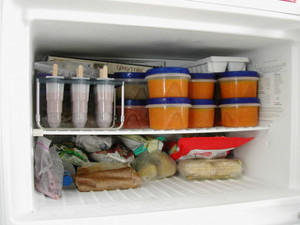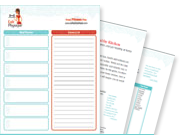Eating healthy on a budget often seems like a daunting task. Whenever we get too tired, busy, or tempted by the latest advertised meal deals or dollar menu, it’s easy throw up our hands and proclaim that, “Eating healthy is too expensive!” but this is simply not true. Refined, processed, junk food may initially appear to be the cheapest choice, but in terms of bang for the buck, it has little or no nutrients to help energize and sustain our bodies and often lasts for just one meal.
I once heard it said that you can pay the grocer or pay the doctor, inferring that healthy food is a lot less expensive than treating an illness caused by poor eating habits. I got that message loud and clear and committed to making wise food choices, and the three P’s: Plan, Purchase and Prepare, help me do just that while staying on track with my budget:
- Be a bargain hunter: Look for coupons, newspaper ads and other discounts to save money on food purchases.
- Make a list: Plan your meals and snacks based on your weekly budget. Select items from each food group to ensure that you have a healthy, balanced meal. Always shop with a list to avoid expensive impulse purchases.
PURCHASE
- Pick less processed foods: Shopping the perimeter for fresh food, perusing the center aisles for grain and legume staples, and frequenting the farmer’s market are great ways to select more nutritious, less costly food items. These items may need a little more attention (e.g. prepping and cooking) than their pricey processed counterparts but provide more bang for your buck in terms of more sustainable meals.
- Select store brands: Store brand foods are comparable to name brands but cost much less.
- Buy in bulk: Nutritious whole grains such as brown rice, rolled oats, dried beans and peas and canned foods (in juice or water) can be purchased in bulk to have on hand whenever you need to throw together a healthy meal.
PREPARE
 Cook early & extra: Choose a day during the week when you have the most time to prepare a healthy meal. Freeze extra portions of the meal to serve at a later time.
Cook early & extra: Choose a day during the week when you have the most time to prepare a healthy meal. Freeze extra portions of the meal to serve at a later time.- Go Meatless: Make a meatless meal (e.g. substitute with beans or another plant protein) at least once or twice a week. This will save money and help encourage creativity in the kitchen.
- Recycle: Put your ingredients to work! Transform leftover foods into a new meal during the week (e.g Rotisserie chicken from one meal can be used for chicken soup, salad or even wraps for the next meal).
Remember, the best way to eat healthy and to save money is to take control of your food. So plan, purchase, and prepare your own meals as often as possible. Enjoy eating healthy on a budget!
Guest post written by Christen Miller, Cafe Physique registered dietitian



